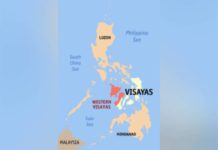
ILOILO – Eighty more schools in Western Visayas are ready to hold face-to-face classes if the scheme is expanded, according to Department of Education (DepEd) Region 6 director Ramir Uytico.
DepEd-6 already submitted the names of these schools to its central office.
“Naka-standby na ‘yung mga schools. Kung mag-lower ‘yung alert level sa Region 6, siguro bibigyan na tayo ng go-signal from central office na magkaroon ng expansion,” said Uytico during Friday’s virtual press conference.
Western Visayas is under Alert Level 3 until Feb. 15 unless this is extended or shortened. Under this level, face-to-face classes are generally prohibited. Under Alert Level 2, on the other hand, limited face-to-face classes are allowed..
At the moment, schools are largely using learning modules due to the coronavirus pandemic. Others are supplementing these with online classes.
But face-to-face classes are still deemed the best way for pupils to gain access to quality education.
The 80 schools getting ready for face-to-face classes are in the following areas:
* Negros Occidental towns – 16
* Silay City – 15
* Sagay City – 11
* Antique – nine
* San Carlos City – eight
* Aklan – four
* Cadiz City – four
* Escalante City – three
* Iloilo province — three
* Himamaylan City – two
* Passi City – two
* Guimaras – one
* Roxas City – one
* Victorias City – one
DepEd 6 information officer Hernani Escullar Jr. earlier said schools participating in the expansion have to comply with the requirements set in the School Safety Assessment Tool (SSAT).
“The No. 1 rule is for the school to be situated in low-risk areas. Inside the school, they must have a foot bath, hand washing area, distance between learners, sanitizers, contact-less thermometer and triage area,” he said.
These are necessary, Escullar stressed.
“We make sure there are no coronavirus disease 2019 (COVID-19) outbreaks in schools. The guidance of our regional director is that we don’t want to risk the lives of our learners but at the same time we don’t want to stop the provision of quality education to our learners,” said Escullar.
Once an area is under Alert Level 3, schools must resort to modular teaching, online and/or radio or television-based instruction until the alert level eases.
Should they want to resume face-to-face classes, schools also need to secure the concurrence of their local government unit (LGU), local Inter-Agency Task Force (IATF) and parents.
According to DepEd assistant secretary Malcolm Garma, 304 schools across the country in areas under Alert Level 2 can already start limited face-to-face cases.
He said as long as the identified schools which are ready for face-to-face are located in areas under alert level 1 and 2, there is no need for a go signal from the central office.
Meanwhile, DepEd Secretary Leonor Briones noted that they have actually identified around 6, 000 schools for the expanded face-to-face. However, most of these are in areas still under Alert Level 3.
“Hindi namin pwedeng ipilit ‘yan at magkaroon ng debate. Ayaw namin mag-debate on matters of health dahil hindi naman ‘yan ang expertise ng DepEd. Of course, all of us have an idea about health but mas nakakaalam, lalo na pediatric ‘yan, ang mga recognized specialists,” Briones said./PN



